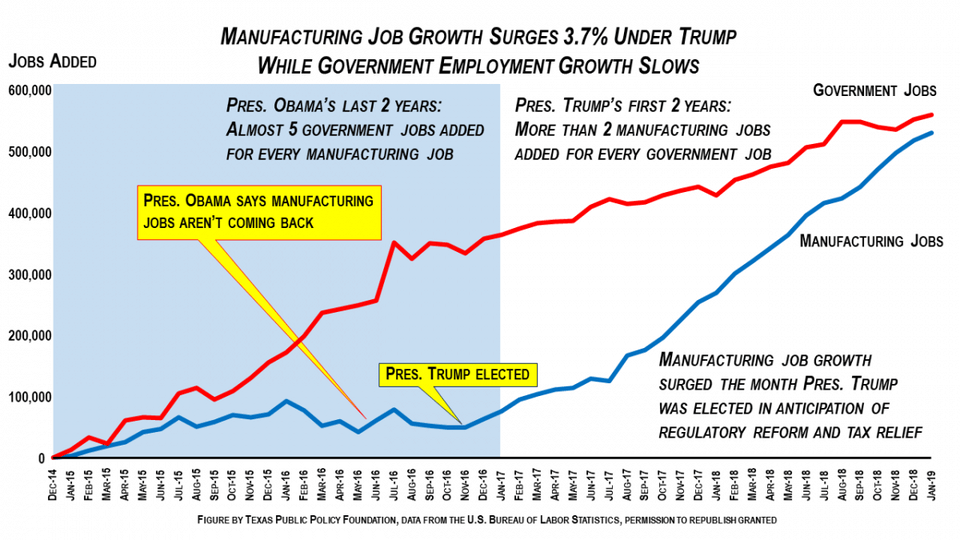Amazon News Roundup, Volume 11
Seller chatter
To impose tariffs or not to impose tariffs. That is the question.
Last Friday, following an 80-minute meeting between US President Donald Trump and Chinese President Xi Jinping, the two world leaders confirmed in separate statements that they did not plan to levy any new tariffs at the present time.
Chinese state-run press agency Xinhua described the meeting result as the presidents agreeing “to restart trade consultations between their countries on the basis of equality and mutual respect.”
This development comes shortly after May 10th, 2019, when President Trump raised tariffs on $200 billion of Chinese imports, from 10% to 25%.
Of course, China retaliated three days later, announcing new tariffs on $60 billion of American exports.
Additional tariffs on another $300 billion in Chinese goods were being considered by the US, pending a USTR (United States Trade Representative) hearing and a public comment period in June of 2019.
Fortunately, we’ve avoided further tariffs; for now, anyway.
How have these tariffs affected Amazon FBA sellers?
A large number of Amazon FBA private label sellers import goods from China to the US, in order to sell them on amazon.com. But are the products they’re selling impacted by the additional fees?
Members of our Amazon group, Amazon FBA Competitive Edge, shared how they’ve been affected by the increased tariffs so far.
“The latest 25% [tariffs] when into effect [in May] when my product was on the ocean. So I got hit when it cleared customs. [I] now have 45% customs duty on a [redacted] product. So now I need to pass the cost onto the US customer, so they lose. I’ve decided to sell out of the product and discontinue selling that one. So I lose. The Chinese manufacturers lose the business so they lose and the US Treasury loses the tariff because I’m not going to sell it anymore. Thoughts on who wins in a global trade war?”
– Matt G.
In response to Matt G’s comment, member Ted C. had this insight:
“A Chinese seller will most likely move into the space created by you. American business people are the only ones permanently hurt by this. It didn’t use to be this way because you needed distribution; Amazon is the distribution.”
– Ted C.
And more member insights:
“Notice how selling globally on Amazon became ‘easier’? My wife sources products from China. She’s not too happy.”
– Hittmmaaan O.“I hate the 25% on textiles.”
– Alie N.
Of course, not everyone sees the tariffs as a negative:
“My business is 100% domestic, so no problem.”
– Jeremy S.“I’m sure the tariffs are temporary until China stops ripping us off. Anyway, I put the long-term good of our country and people before myself.”
– Trey B.“I think it has been a very powerful negotiating tool for President Trump. It has not affected my business in the least. It’s about time we attempted to even out the huge trade deficit in this country. Just look what it has done for employment in this country.”
– Ron T.“Tariffs have helped South East Asian countries with greater economic opportunity.”
– Dean S.
How have sellers been avoiding tariffs?
Fortunately, there are a few ways to avoid tariffs. The most obvious solution is to stop purchasing products from countries like China, that have heavily-levied tariffs.
Many sellers use Alibaba to source their products, but since the tariffs were introduced, they’ve been turning to other global sources. In fact, some now use Jungle Scout’s Supplier Database for sourcing.
It offers data on suppliers outside of China, giving sellers options when it comes to country-of-origin and importing manufactured products to the US.
Tips from a big seller
Fulton Imports, a very large Amazon seller, told us that of the 650+ products Fulton ships from China, 38% have been affected by the tariffs.
Julieonna Mennucci, one of Fulton’s managers, has some tips for Amazon FBA sellers. They helped Fulton minimize the effects of their increased costs:
- If you are paying FOB (free on board) prices, make sure the factory puts the ex-factory price rather than FOB price on the CI (cost and insurance). It’s usually a small amount, but it does add up.
- Renegotiate pricing with the factory if you can. A lot of Fulton’s factories were very aware of what’s been going on and were willing to help where they could. Explaining to them that Fulton could not keep doing business if they did not make up some of the costs incurred by the tariffs helped them get their pricing down, by 2-10%
- Because China has been devaluing the RMB (Ren Min Bi; China’s currency), this is also a good place to try and get prices down.
- Look in other counties. Fulton was able to switch a few of their main products to Taiwan, Vietnam, and are in the process of onboarding a new factory in Thailand. The onboarding process is taking longer than expected, but Mennucci said Fulton would likely have a few new factories outside of China up to speed in about six months.
- If you are working with a trading company, go directly to the factory (if you have enough knowledge to cut out the dealer) and save the commission.
- Get bids from other factories, to see if you can make up some of your tariff-related losses by improving your profit margin.
- Switch your packaging. If you’re shipping your product in a four-color, printed box, for example, consider changing to a craft box a with a sticker. Depending on the size of the box, you could save anywhere from 1o to 50 cents per package.
- Try to negotiate a better shipping rate with your freight forwarder.
Tips from Sourcify
We also interviewed the logistics experts at Sourcify, to find out what methods they’ve used to alleviate the negative effects of the Chinese-import tariffs.
Phillip Moorman, Head of Marketing at Sourcify, offered up some interesting insights:
“[One] tactic being used is to ship products to Mexico and then importing them into the U.S. in shipments valued at less than $800, which prevents them from having to pay additional tariffs on their goods.”
Sourcify’s Nathan Resnick elaborated on this ‘nearshoring’ technique in the article, Top Benefits of Using A Mexican Third Party Logistics & Fulfillment Company.
We also asked Moorman which categories are suffering the most from the trade war.
“Almost everything using wood, paper, plastic, hide/leather and rubber has been hit with the 25% tariff, but the hardest hit categories are apparel, footwear, accessories and basic jewelry.”
Does he think the tariffs will have lasting, long-term effects?
“Possibly, but we’re not expecting the increased tariffs to remain after the next Presidential election.”
The real winner of the trade war is…Vietnam?
Moorman also points to Vietnam as being the new country-of-choice for a lot of importers.
“We are seeing Chinese factory owners moving their facilities to Vietnam to continue producing goods at low costs.
“It’s possible Vietnam will see long term benefits from this move as their overall production and labor costs are already lower, the main issue was that Vietnam doesn’t have established infrastructure but that’s being built to deal with the new tariffs.”
Of course, Vietnam isn’t totally immune to tariffs. Bloomberg reported that just yesterday Vietnam was hit with a 400% increase in tariffs on imported steel.
And World Politics Review believes that Vietnam will be the next country to be targeted by Trump.
“Vietnam is ‘almost the single worst abuser of everybody,’ Trump declared in response to a question about imposing tariffs on the country, adding that ‘a lot of companies are moving to Vietnam, but Vietnam takes advantage of us even worse than China.'”
Last Thoughts
Tariffs and geopolitics are nothing new. Phil Knight, founder of Nike, met with similar headaches while building the famous shoe company back in the ’60s and ’70s. But he and Nike managed to survive.
Plus, the popularity of Chinese products is a fairly recent trend. We only started to see a big rise in Chinese imports in the 1990’s. Perhaps this means domestic products will soon be all the rage…again.
And, it turns out, Trump’s tariff hikes have benefited the US economy, at least in terms of employment.
Forbes reported, in February of 2019, that the US has added a significant number of manufacturing jobs since 2017. The number is nearly six times as many as those added under the Obama administration.

However, while good news for those employed by manufacturers, an increase in manufacturing jobs doesn’t necessarily mean a boost to the economy. Historically, raising tariffs leads to inflation.
And with major importers like Wal-mart, Target, and Amazon affected by these tariffs, these massive retailers have two choices:
- keep prices the same and reduce profit margins;
- or pass the cost on to consumers, just as ACE member Matt G. had to do.
In the end, someone’s going to lose.
Want to get in on the chatter?
If you’re a Jungle Scout user, join our members-only Facebook group:
Amazon FBA news this week
Need to know for Amazon FBA Sellers
- Moving from vendor to seller on Amazon? Here’s what you need to know – Marketing Land
- Amazon can be held liable for third party seller products: US Appeals Court – Yahoo! Finance
- Amazon adds some new features for sellers and brands – Ecommerce Bytes
Also of interest:
- US retailers with $1.5 trillion in sales demand an anti-trust probe of Amazon and Google – Zero Hedge
- Amazon forges financial alliances as bank execs brace for full invasion – The Financial Brand
- How the Chins trade deal will affect Amazon sellers – Business Insider
Anything we missed?
Let us know what’s important to you by filling out the following (anonymous) form:

 2 Comments
2 Comments
2 comments on “Amazon FBA Seller News – July 5, 2019”